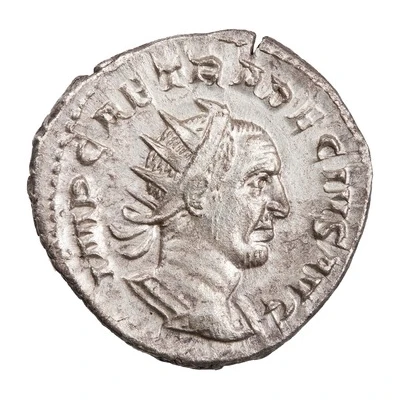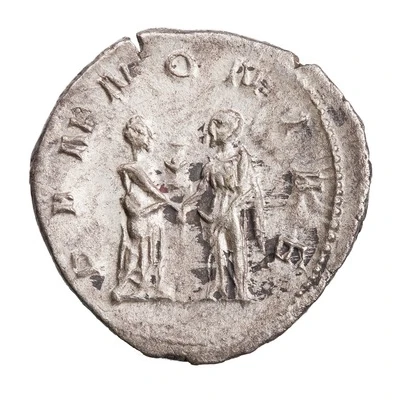Quinarius - Herennius Etruscus as Caesar PRINCIPI IVVENTVTIS
| Silver | - | - |
| Issuer | Rome › Roman Empire (27 BC - 395 AD) |
|---|---|
| Emperor | Decius (Gaius Messius Quintus Traianus Decius) (249-251) |
| Type | Standard circulation coin |
| Years | 250-251 |
| Value | Silver Quinarius (¼) |
| Currency | Antoninianus, Reform of Caracalla (AD 215 – 301) |
| Composition | Silver |
| Shape | Round (irregular) |
| Technique | Hammered |
| Demonetized | Yes |
| Updated | 2024-10-05 |
| Numista | N#282811 |
|---|---|
| Rarity index | 100% |
Reverse
Herennius, in military attire, standing left, holding wand in right hand and transverse spear in left hand.
Script: Latin
Lettering: PRINCIPI IVVENTVTIS
Translation:
Principi Juventutis.
To the prince of the youth.
Comment
Source:Online Coins of the Roman Empire (OCRE)
Interesting fact
The Quinarius coin featuring Herennius Etruscus as Caesar (PRINCIPI IVVENTVTIS) was minted during a time of great turmoil in the Roman Empire. The year 250 AD saw the rise of the Goths, who were a Germanic tribe that had been pushed westward by the Huns. They eventually reached the borders of the Roman Empire and began to attack its territories. This coin was likely minted to help finance the military campaigns against the Goths. It's interesting to note that the coin features the image of Herennius Etruscus, who was a prominent Roman general and statesman. He was appointed as Caesar by the Emperor Decius, who ruled from 249 to 251 AD. The coin's inscription, "PRINCIPI IVVENTVTIS," translates to "to the prince of youth," which suggests that Herennius Etruscus was seen as a promising young leader at the time. Overall, this coin provides a fascinating glimpse into the political and military climate of the Roman Empire during the 3rd century AD.

